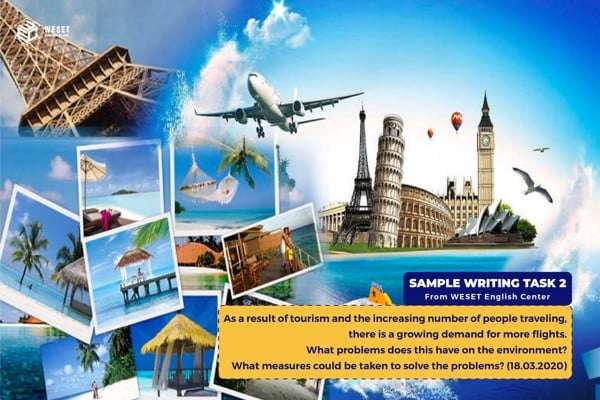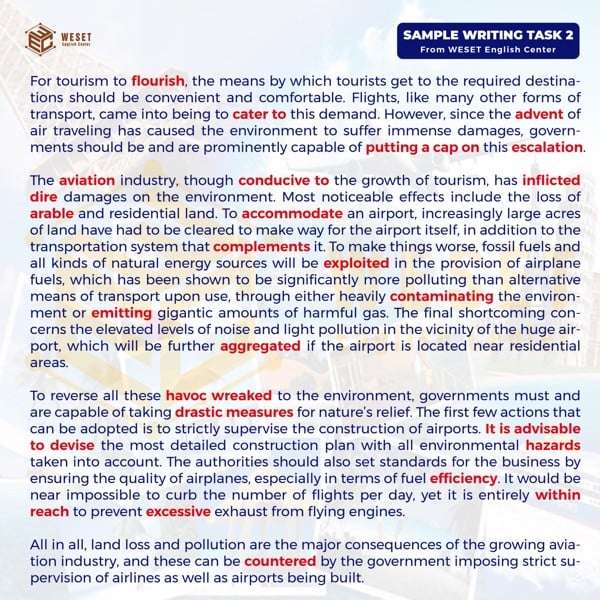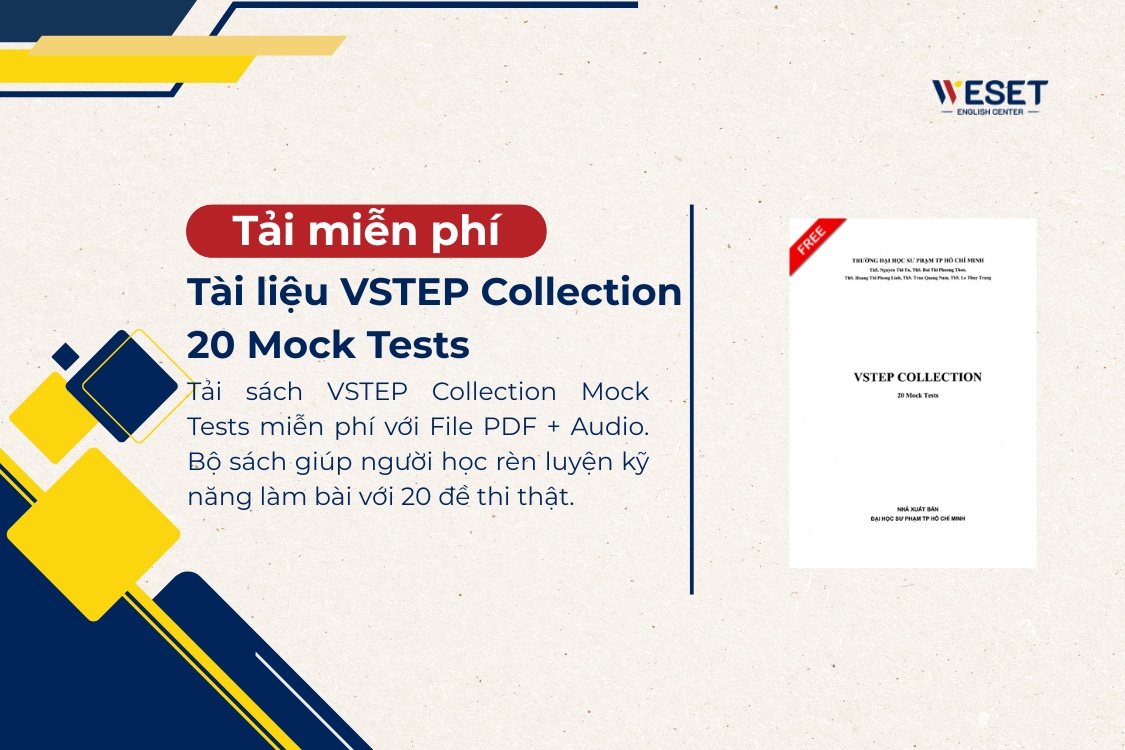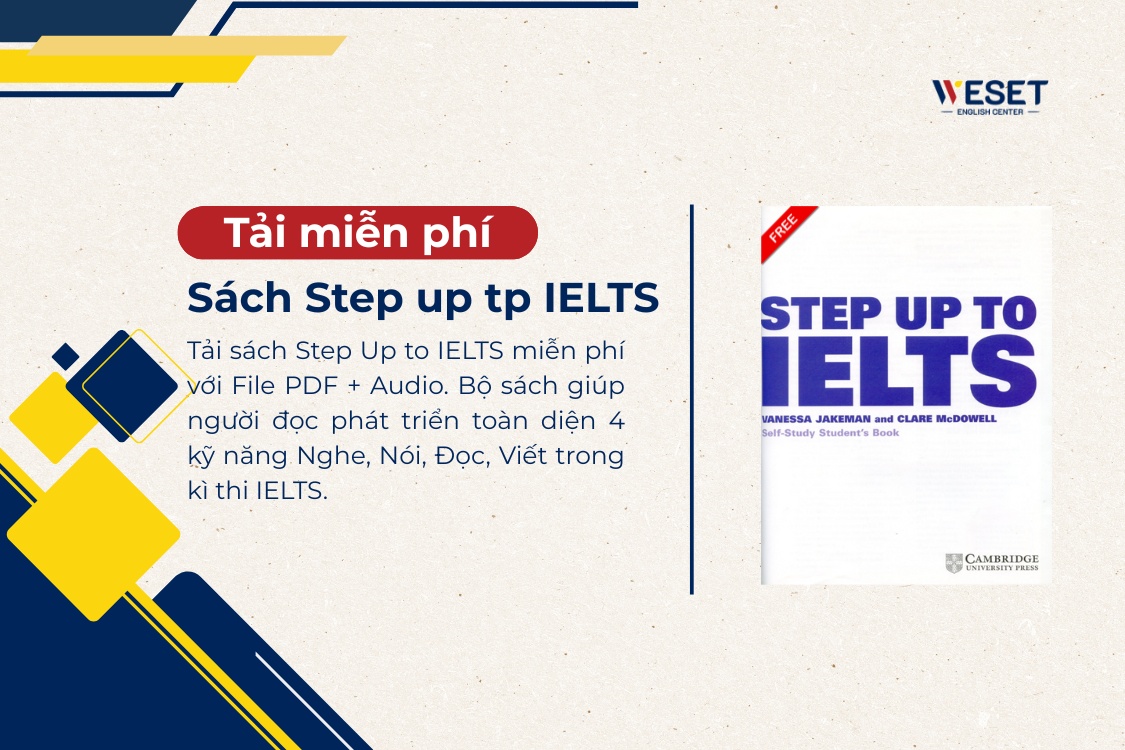Trang chủ Blog Bài thi IELTS mẫu Bài mẫu IELTS Sample Writing IELTS Writing Task 2 Environment: Dàn ý & Bài mẫu
IELTS Writing Task 2 Environment: Dàn ý & Bài mẫu
- Cerys Wu
- Bài mẫu IELTS Sample Writing, Bài mẫu Task 2 IELTS Writing sample, Bài thi IELTS mẫu
MỤC LỤC
Two-part question là dạng bài làm khó rất nhiều thí sinh trong phần thi IELTS Writing Task 2 bởi có quá nhiều ý tưởng để trình bày. Vậy làm thế nào để có thể diễn đạt ý tưởng một cách logic, mạch lạc? Hãy cùng WESET lập dàn ý và thử giải quyết đề thi Writing task 2 về chủ đề “Environment” nhé.
1. Kiến thức chung
Yêu cầu của dạng đề Two-part question luôn rất rõ ràng. Nhiệm vụ của bạn là trả lời rõ ràng 2 câu hỏi của đề bài. Đối với dạng đề này, chúng ta có thể áp dụng dàn bài chung gồm 4 đoạn như sau:
A. Introduction
➤ Paraphrase vấn đề đặt ra trong đề bài
➤ Thesis statement: giới thiệu nội dung chính của bài và trả lời khái quát 2 câu hỏi đặt ra trong đề
B. Body 1: Trả lời câu hỏi 1 – Problems (vấn đề)
➤ Nêu luận điểm (câu mở đoạn)
➤ Reasons (đưa ra một số lý do)
➤ Examples/Evidences (dẫn chứng ví dụ)
C. Body 2: Trả lời câu hỏi 2 – Solutions (giải pháp)
➤ Nêu luận điểm (câu mở đoạn)
➤ Reason/s (đưa ra một số lý do)
➤ Examples/Evidences (dẫn chứng ví dụ)
D. Conclusion:
➤ Tóm tắt ngắn gọn bài viết
➤ Khẳng định lại nguyên nhân – giải pháp
2. Phân tích đề
As a result of tourism and the increasing number of people traveling, there is a growing demand for more flights.
What problems does this have on the environment?
What measures could be taken to solve the problems?
Đề bài hôm nay yêu cầu trình bày những vấn đề mà việc tăng số lượng chuyến bay có thể làm ảnh hưởng đến môi trường và cách giải quyết.
Đối với đề bài này, chúng ta có thể lập dàn ý chi tiết như sau:
A. Introduction
➤ Paraphrase vấn đề đặt ra trong đề bài
➤ Thesis statement: Since the advent of air traveling has caused the environment to suffer immense damages, governments should be and are prominently capable of putting a cap on this escalation.
B. Body 1: Problems
➤ Loss of land
➤ Excessive exploitation of natural resources
➤ Noise and light pollution
C. Body 2: Solutions
➤ Supervision of airports
➤ Ensuring the quality of airplanes
D. Conclusion:
All in all, land loss and pollution are the major consequences → government imposing strict supervision of airlines as well as airports
3. Bài mẫu & từ vựng
Từ vựng
- Flourish (v) phát triển
- Advent (n) sự ra đời
- Cater (v) to phục vụ cho
- Put (v) a cap (n) on thiết lập giới hạn
- Escalation (n) sự leo thang (nghĩa bóng)
- Aviation (n) ngành hàng không
- Conducive (a) có lợi
- Inflict (v) gây thiệt hại
- Dire (a) nặng nề
- Accommodate (v) dọn chỗ (cho….)
- Arable (a) màu mỡ (cho cày cấy)
- Complement (v) đi kèm
- Exploit (v) khai thác, lợi dụng
- Contaminate (v) làm nhiễm/ô uế
- Emit (v) thải ra
- Vicinity (n) khu lân cận
- Aggregate (v) gộp thêm vào
- Havoc (n) sự tàn phá
- Wreak (v) gây ra (chuyện tiêu cực)
- Drastic (a) quyết liệt
- Measure (n) phương pháp
- Relief (n) sự cứu trợ
- It is advisable (a) that… chuyện nên làm là…
- To devise (v) lập ra
- Hazard (n) chướng ngại, hiểm nguy
- Efficiency (n) sự hiệu quả
- Within (av) reach (n) trong tầm tay
- Excessive (a) quá mức
- Counter (v) đối phó
Tham khảo thêm bài mẫu tại: https://weset.edu.vn/blog/bai-hoc-moi-ngay/
Có thể bạn quan tâm:








